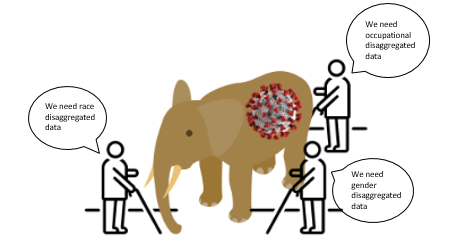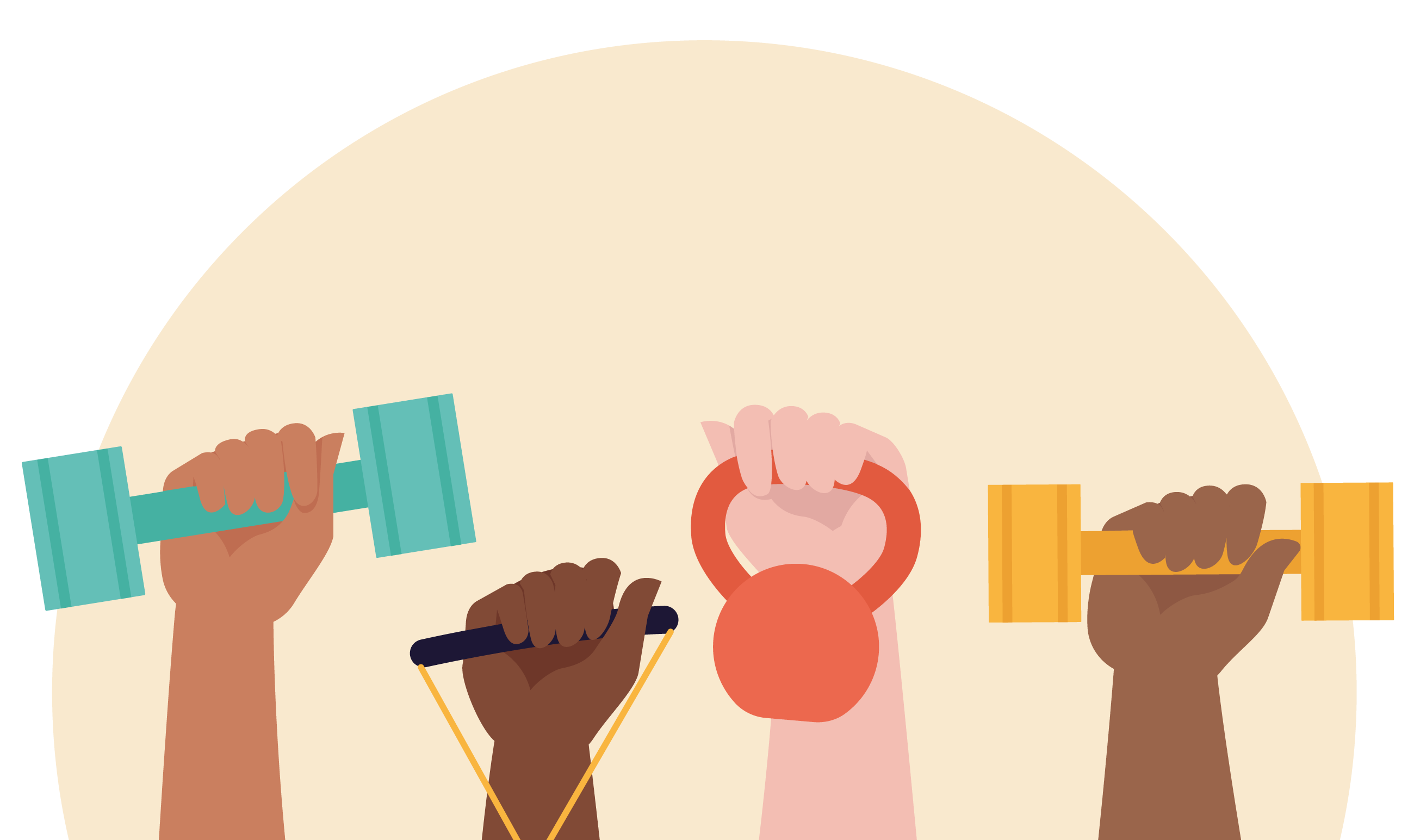By Derek M. Griffith, Jennifer M. Ellison and Andrea R. Semlow
In the parable of The Blind Men and the Elephant, the men used their limited perception of the elephant to do their best to understand what the elephant was. Each was wrong because they failed to be able to perceive the totality of the animal they sought to understand. The limited lens they used led them to overgeneralize and completely misrepresent the fullness of the thing they sought so desperately to understand. In our current moment, we are the blind men and COVID-19 is the elephant, and by using data sources that only report data by race, place or gender, we are misunderstanding what COVID-19 is and how we can best address it.
How do we identify those at greatest risk of contracting or dying of COVID-19?
For a decade, public health scholars have borrowed the concept of intersectionality from legal scholars such as Kimberlie Crenshaw. She conceived of the concept after recognizing the limitations of looking at cases of employment discrimination through the lens of race and gender separately when the people most affected by discrimination were those Black women who needed race and gender to be considered simultaneously. In the COVID-19 pandemic, public health professionals have made similar approaches: we have used heat maps to indicate place and different databases to quantify cases by race and gender, but how do we decide which lens to use (race, place or gender) to understand the problem? The answer is none of the above, because the question is flawed. The better question is, “How do we identify those at greatest risk of contracting or dying of COVID-19?”
In this pandemic, who you are may matter more than what you do. If you live in an area where there is a higher number of cases, you are at greater risk than those who live in other areas. If you are Black, Indigenous and People of Color (BIPOC), you are at greater risk too. If you are a woman, you are at greater risk of bearing the social and economic burdens of the virus, and if you are a man you are at greater risk of dying from COVID-19. If the public health lessons from landmark studies like the Whitehall Study of British Social Servants holds true, these labels of race, place and gender will matter more than the individual behavior of individuals. Let’s rephrase that… Even among those who are vigilant about protecting themselves and others, their risk of contracting, dying from, or having their well-being affected by the virus is not the same.
Current data presentations are flawed
The problem is that policy makers globally and in the US are using these flawed ways of looking at data to inform policy decisions such as where and when to reopen, where to dedicate resources, who to feature in public service announcements, and who to prioritize in critical care. These choices, while they may seem innocuous and well-intentioned, have real consequences, particularly for people for whom race, place and gender may each be useful lenses through which to identify their increased risk: People do not live as “raced” beings one day and “gendered” beings another. If I am an indigenous woman living on a reservation or a Black man living in a dense city, or a rural woman who works as a farmer, my risk is not just due to one of these factors or multiple ones. My risk is due to the way these markers combine.
COVID-19 is hitting certain places, races and genders especially hard, and this has been the case since the earliest reporting of the pandemic. For example, we continue to receive daily reports of places with particularly high numbers of COVID-19 cases and we devise and implement economic and social policies accordingly. Race and ethnicity have been used in particularly complex ways: first it was used to suggest that some populations (e.g., Black Americans) were immune to the virus, and then race was used to suggest that the same population was genetically predisposed to the disease. The earliest reports from China and Italy suggested that men are dying from the virus more than women and this pattern has remained consistent across the globe, and yet more recent research has illustrated how women are more affected by the gendered economic and social contexts in many societies.
We have the capacity to do better
While all of these lenses have yielded important insights into ways that we can better understand how to control and manage the pandemic, what also remains apparent is that our efforts will continue to be limited if we do not refine our data sources to consider all of these factors simultaneously. It is not to say that these are the only markers of risk; we know that sexual and gender minorities, those who are deemed essential workers, and others are at increased risk too. The point is that when we have the capacity to do better we need to do so and use the best possible ways of considering the data that we have to target our policies, programs and initiatives where they are most needed.
For further information contact
Derek M. Griffith, PhD, Founder and Director of the Center for Research on Men’s Health and Professor of Medicine, Health and Society, Center for Research on Men’s Health, Vanderbilt University, derek.griffith@vanderbilt.edu
Jennifer M. Ellison, MA, Project Coordinator, Center for Research on Men’s Health, Vanderbilt University, jennifer.m.ellison@vanderbilt.edu
Andrea R. Semlow, MS, MPH, Project Coordinator, Center for Research on Men’s Health, Vanderbilt University, andrea.r.semlow@vanderbilt.edu






